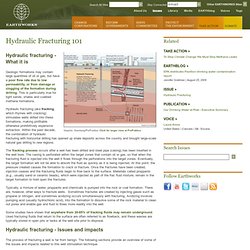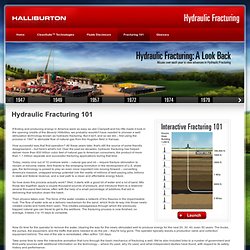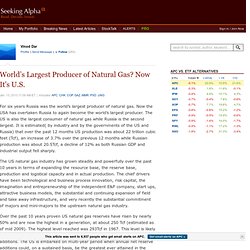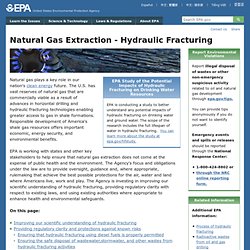

Basic Information about Injection Wells. This page answers the following questions about injection wells and the UIC Program: What is an injection well?

An Injection well is a device that places fluid deep underground into porous rock formations, such as sandstone or limestone, or into or below the shallow soil layer. These fluids may be water, wastewater, brine (salt water), or water mixed with chemicals. The UIC Program defines an injection well as: A bored, drilled, or driven shaft, or a dug hole that is deeper than it is wide,An improved sinkhole, orA subsurface fluid distribution system. Hydraulic Fracturing 101. Hydraulic fracturing - What it is Geologic formations may contain large quantities of oil or gas, but have a poor flow rate due to low permeability, or from damage or clogging of the formation during drilling.

This is particularly true for tight sands, shales and coalbed methane formations. Hydraulic fracturing (aka fracking, which rhymes with cracking) stimulates wells drilled into these formations, making profitable otherwise prohibitively expensive extraction. Within the past decade, the combination of hydraulic fracturing with horizontal drilling has opened up shale deposits across the country and brought large-scale natural gas drilling to new regions. The fracking process occurs after a well has been drilled and steel pipe (casing) has been inserted in the well bore. Typically, a mixture of water, proppants and chemicals is pumped into the rock or coal formation.
Some studies have shown that anywhere from 20-85% of fracking fluids may remain underground. Water Use In 2010, the U.S. Fracturing 101. If finding and producing energy in America were as easy as Jed Clampett and his rifle made it look in the opening credits of the Beverly Hillbillies, we probably wouldn't have needed to pioneer a well stimulation technology known as hydraulic fracturing.

But it isn't, and so we did – first using the process in 1947 to stimulate flow of natural gas from the Hugoton field in Kansas. How successful was that first operation? All these years later, that's still the source of some friendly disagreement – but here's what's not: Over the past six decades, hydraulic fracturing has helped deliver more than 600 trillion cubic feet of natural gas to American consumers, the product of more than 1.1 million separate and successful fracturing applications during that time. Today, nearly nine out of 10 onshore wells – natural gas and oil – require fracture stimulation to remain or become viable.
So how does this process actually work? Then physics takes over. World’s Largest Producer of Natural Gas? Now It's U.S. For six years Russia was the world’s largest producer of natural gas.

Now the USA has overtaken Russia to again become the world’s largest producer. The US is also the largest consumer of natural gas while Russia is the second largest. It is estimated( by industry and by the governments of the US and Russia) that over the past 12 months US production was about 22 trillion cubic feet (Tcf), an increase of 3.7% over the previous 12 months while Russian production was about 20.5Tcf, a decline of 12% as both Russian GDP and industrial output fell sharply. The US natural gas industry has grown steadily and powerfully over the past 10 years in terms of expanding the resource base, the reserve base, production and logistical capacity and in actual production.
Over the past 10 years proven US natural gas reserves have risen by nearly 50% and are now the highest in a generation, at about 250 Tcf (estimated as of mid 2009). Do you trust this author to give you good analysis? Breaking Fuel From the Rock. Hydraulic Fracturing and Shale Gas Extraction. EPA Study of the Potential Impacts of Hydraulic Fracturing on Drinking Water Resources EPA is conducting a study to better understand any potential impacts of hydraulic fracturing on drinking water and ground water.

The scope of the research includes the full lifespan of water in hydraulic fracturing. You can learn more about the study at epa.gov/hfstudy. Natural gas plays a key role in our nation's clean energy future. The U.S. has vast reserves of natural gas that are commercially viable as a result of advances in horizontal drilling and hydraulic fracturing technologies enabling greater access to gas in shale formations.
EPA is working with states and other key stakeholders to help ensure that natural gas extraction does not come at the expense of public health and the environment. On this page: Improving our Scientific Understanding of Hydraulic Fracturing.